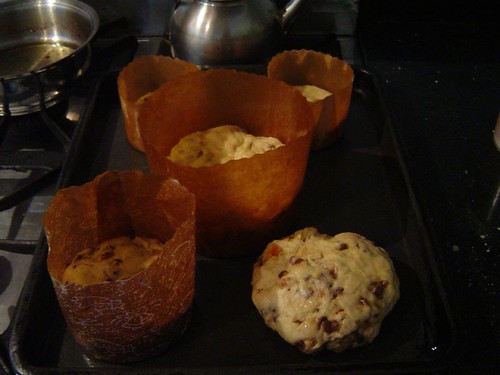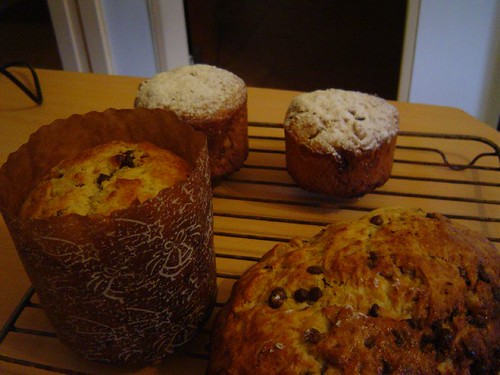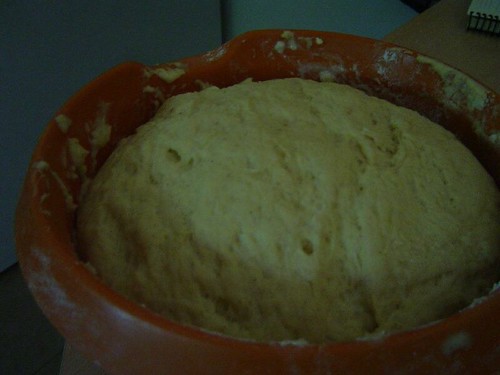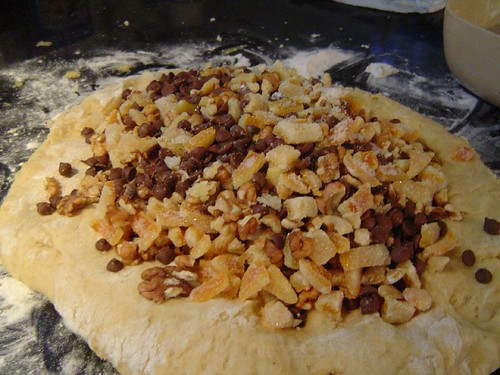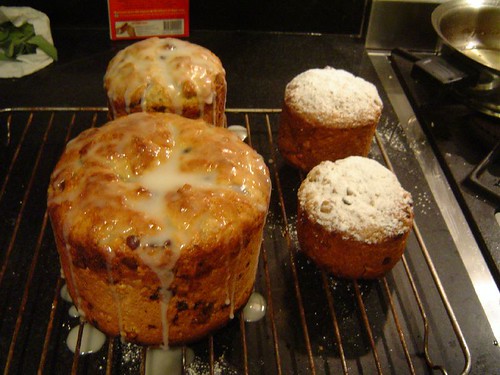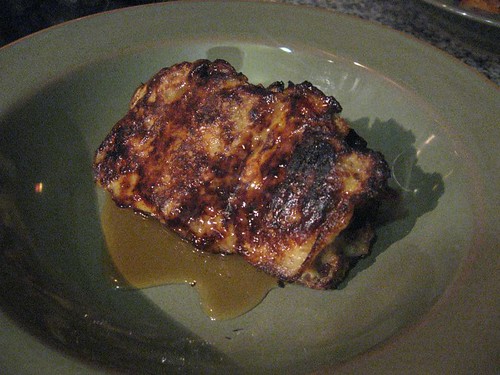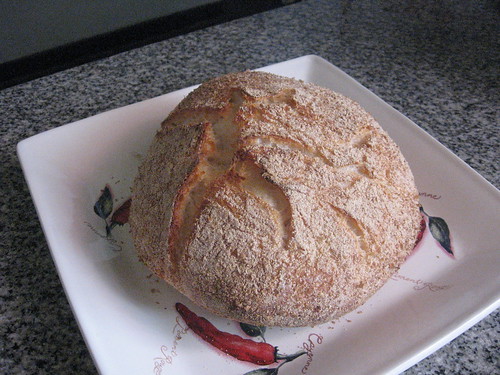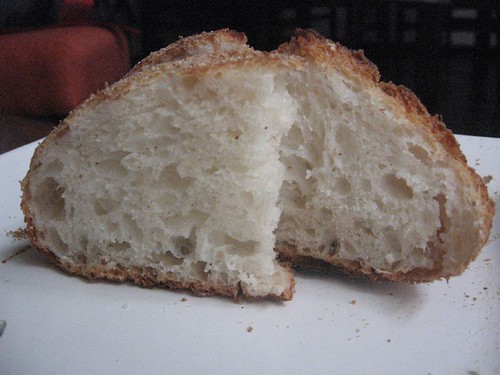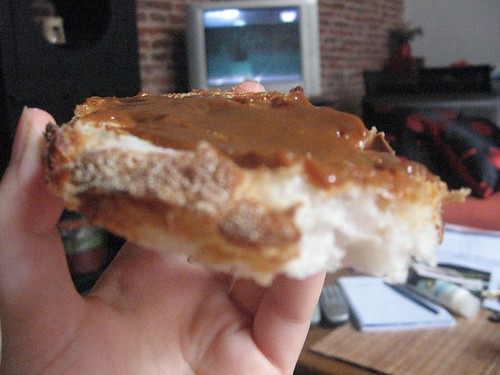gruyere-serrano ham focaccia
I´ve only ventured into bread-making quite recently and I can´t believe it took me so long to jump in. I mean, there must be something inherently scary about yeast, you know, all the fears about "killing it", no wonder people are scared of bread if they choose those words to describe the process!
First, I tried my hand at pizza, then I did a white batter bread which turned out beautifully, and was so happy with it I did repeats for different people quite a few times... oh, the bread-maker´s ego.
I even jumped in the no knead bread bandwagon.
There was only one way to feed my new addiction: buy a bread-making book. Which I did a few weeks ago. I chose this book by an Argentine specialist I had seen on tv a few years ago and marvelled at the "foaminess" of his creations.
There are 145 recipes, so I will have plenty of stuff to keep me entertained, but the first recipe I chose was a gruyere cheese-serrano ham focaccia.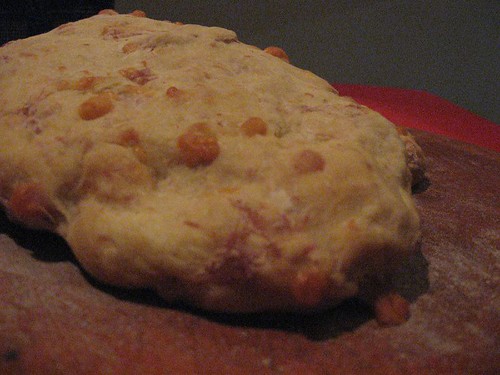
I usually know whether a recipe will succeed or not just by looking at the ingredients list. In this case: gruyere + ham = deliciousness.
Plus, the recipe was pretty easy and it yields 4 loaves, so I knew I probably would have 2 loaves left over from my dinner party that I would freeze and recycle for future dinners. 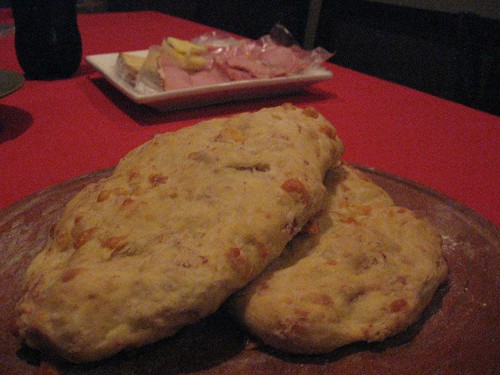
I wasn´t disappointed, the only slight problem was that the ham was a bit salty for my taste (then again, I´m used to eating with very little salt because my dad has high blood pressure so salt is pretty much non-existent at my parents´). So try your ham first and adjust the amount of salt you add to the dough accordingly.
You can also use the recipe as a base and exchange the ham for sun-dried tomatoes for instance. Just think of things you would like to find in there and you are set to go.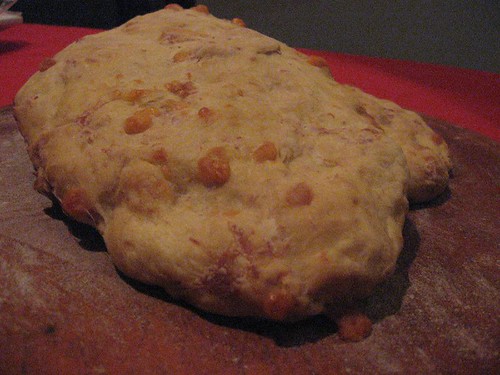
Gruyere-serrano ham focaccia (from 145 Recetas de panes y facturas by Marcelo Vallejo)
All-purpose flour (here it is called 0000), 500 grams (1.1 pounds)
Salt, 2 teaspoons
Fresh yeast, 25g (around 10g of instant yeast, 2 teaspoons)
Water, 300cc (around 10oz)
Egg, 1
Unsalted butter, 2 tablespoons
Serrano-style ham, 125g (around a 1/4 pound)
Gruyere cheese, 125g (around a 1/4 pound)
Extra-virgin olive oil (to brush the bread)
Yield: 4 loaves
1. Place the flour and the salt in a bowl. Make a hole in the middle and put the yeast, the lukewarm water, the egg and the softened butter there. Mix slightly.
2. Chop the ham slices thinly and the cheese into tiny squares. Add to the dough.
3. Knead until you get a soft, homogeneous dough (about 3-5 minutes).
4. Put back in the bowl and cover with plastic wrap. Let it rest for 30 minutes.
5. Divide the dough into 4 rolls. Cover and let the balls rest for 15 minutes.
6. Pull out each ball with your hand, giving it an oval or rectangular shape. They should be about 1cm thick.
7. Place them on oiled pans. Brush the top of each loaf with extra virgin olive oil. Cover and let them double.
8. Preheat the oven to 180°C (350°F).
9. Bake for 30 minutes. Serve warm.
